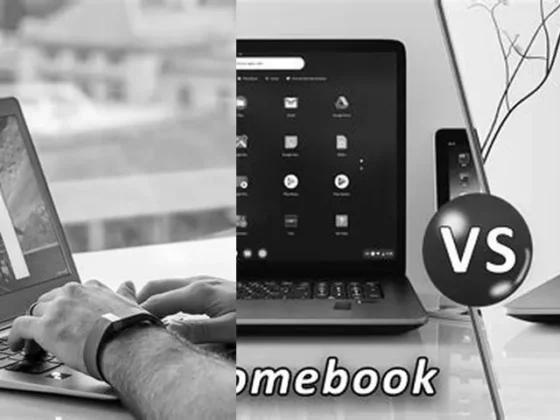Does Chromebook Support Touch Screen? Unveiling the Versatile Capabilities of Chromebooks – Are you tired of constantly reaching for your mouse or trackpad while using your Chromebook? Well, we have some exciting news for you! In this blog post, we will delve into the fascinating world of touch screen functionality in Chromebooks. Yes, you heard it right – Chromebooks with touch screen support exist! So, get ready to tap, swipe, and pinch your way through a whole new level of convenience and productivity. Whether you’re a tech enthusiast, a student, or a professional, this article is a must-read to discover the top picks for touch screen Chromebooks, optimize the use of Android apps, and uncover the versatility of these devices. Get ready to embrace the future of computing with touch screen Chromebooks!
Understanding Touch Screen Functionality in Chromebooks
The era of touch-enabled devices has spurred a revolution in the way we interact with technology. Chromebooks, known for their simplicity and cloud-based efficiency, have not been left behind in this touch screen trend. Yes, Chromebooks do support touch screen functionality, enhancing the user experience with a more tactile, direct form of interaction.
Engagement with Touch Screen on Chromebooks
One of the fundamental aspects of using a touch screen Chromebook is the capability to carry out standard actions with a simple touch. Users can click and right-click with ease, mimicking traditional mouse functions in a more intuitive way. Simply tapping where you want to click or touching and holding where you desire a right-click action brings a level of convenience that can increase productivity and enjoyment while using the device.
Managing Touch Screen Settings
Another core feature of the Chromebook’s touch screen adaptability is the ability to turn the functionality on and off. This flexibility allows users to switch between touch screen and conventional laptop modes, tailoring the device usage to the task at hand or personal preference. Activating or deactivating the touch screen can be easily done with the keyboard shortcut Search+Shift+T, ensuring that control over this feature is just a few keystrokes away.
Top Picks: Chromebooks with Touch Screen Capabilities
With a plethora of options in the market, selecting the best touch screen Chromebook can be daunting. However, certain models stand out for their performance, design, and value. Here’s a closer look at some of the most popular touch screen Chromebooks:
- Lenovo Flex 5i Chromebook (13″): This device is often celebrated as the best overall option, offering a harmonious blend of performance, features, and price.
- Acer Chromebook Spin 311: For those seeking affordability without sacrificing quality, the Acer Chromebook Spin 311 provides the best value.
- Acer Chromebook Spin 714 (2023): Users looking for premium features and robust build quality will find the Acer Chromebook Spin 714 to be an excellent choice.
- Asus Chromebook Vibe CX55 Flip: This model is a versatile option for those who require a touch screen Chromebook that can keep up with various computing needs.
Other notable mentions include the HP Fortis x360 11-inch G3 J Chromebook, Asus Chromebook Flip CX5601, Lenovo Chromebook Duet 5, and HP Dragonfly Pro Chromebook. Each of these models has unique attributes that cater to different user requirements and preferences.
Optimizing the Use of Android Apps on Touch Screen Chromebooks
Touch screen functionality shines brightly when it comes to using Android apps on a Chromebook. The integration of Google Play Store with Chrome OS has opened a world of app possibilities that typically benefit from touch-based navigation. Whether you’re playing games, drawing, or using productivity apps, the touch screen feature provides a more seamless and engaging experience, akin to using a smartphone or tablet.
How to Maximize Touch Screen Use with Android Apps
Here are some actionable tips for getting the most out of your touch screen Chromebook when using Android apps:
- Explore touch-friendly apps: Not all apps are optimized for touch screen use. Seek out those that are designed with touch navigation in mind to take full advantage of your Chromebook’s capabilities.
- Customize your settings: Many Android apps allow you to tweak settings for touch responsiveness and gestures. Dive into the settings to fine-tune your experience.
- Get to know gesture controls: Familiarize yourself with common touch gestures like pinch-to-zoom and swipe actions to navigate apps more effectively.
- Utilize a stylus if available: Some touch screen Chromebooks are compatible with a stylus. This can greatly enhance precision in drawing and note-taking apps.
Touch Screen Chromebooks: A Story of Versatility
Imagine a student who switches from typing a research paper to sketching art for a class project, or a professional who toggles between spreadsheet analysis and presenting a slide deck with the swipe of a finger. These scenarios reflect the versatility of touch screen Chromebooks. They cater to a diverse range of activities, making them suitable for educational environments, business settings, and personal use.
Real-Life Benefits of a Touch Screen Chromebook
Storytelling techniques help us relate to the practical benefits of technology. Here’s a glimpse into the everyday advantages of touch screen Chromebooks:
- Educational Engagement: Teachers and students can interact with educational content more dynamically, fostering a more immersive learning experience.
- Business Efficiency: Professionals can swiftly navigate through complex applications, reducing the time spent on routine tasks.
- Creative Freedom: Artists and designers can directly interact with their creations, leading to a more natural and fluid creative process.
- Entertainment Enhancement: Users can enjoy movies and games with quick and intuitive controls, elevating the entertainment experience.
Conclusion
In the digital age, the touch screen feature on Chromebooks represents a significant stride towards a more interactive and flexible computing experience. From the convenience of touch-based actions to the ability to toggle the functionality on or off, Chromebooks cater to a wide audience. Whether you’re drawn to the Lenovo Flex 5i for its all-around excellence, the Acer Chromebook Spin 311 for its affordability, or the Acer Chromebook Spin 714 for its premium features, there’s a touch screen Chromebook out there that will meet your needs.
Moreover, the integration with Android apps ensures that Chromebooks remain relevant and versatile for various tasks and hobbies. Bearing in mind the actionable tips and real-life benefits highlighted in this post, it’s clear that touch screen Chromebooks are not only a current trend but also a valuable tool for the foreseeable future. The perfect blend of innovation, adaptability, and user-friendly design makes touch screen Chromebooks a smart choice for anyone looking to enhance their digital lifestyle.
FAQ & Related Questions about Chromebook Touch Screen
Q: Does Chromebook support touch screen?
A: Yes, if your Chromebook has a touchscreen, you can perform actions such as clicking and right-clicking by tapping and holding on the screen.
Q: Can I get touch screen on my Chromebook?
A: Yes, Chromebooks have the option to turn the touchscreen on and off. If the touchscreen is not working, you can turn it on by pressing Search+Shift+T.
Q: Which Chromebook models have touch screen?
A: Some popular touchscreen Chromebooks in 2023 include the Lenovo Flex 5i Chromebook (13″), Acer Chromebook Spin 311, Acer Chromebook Spin 714 (2023), and Asus Chromeb.


